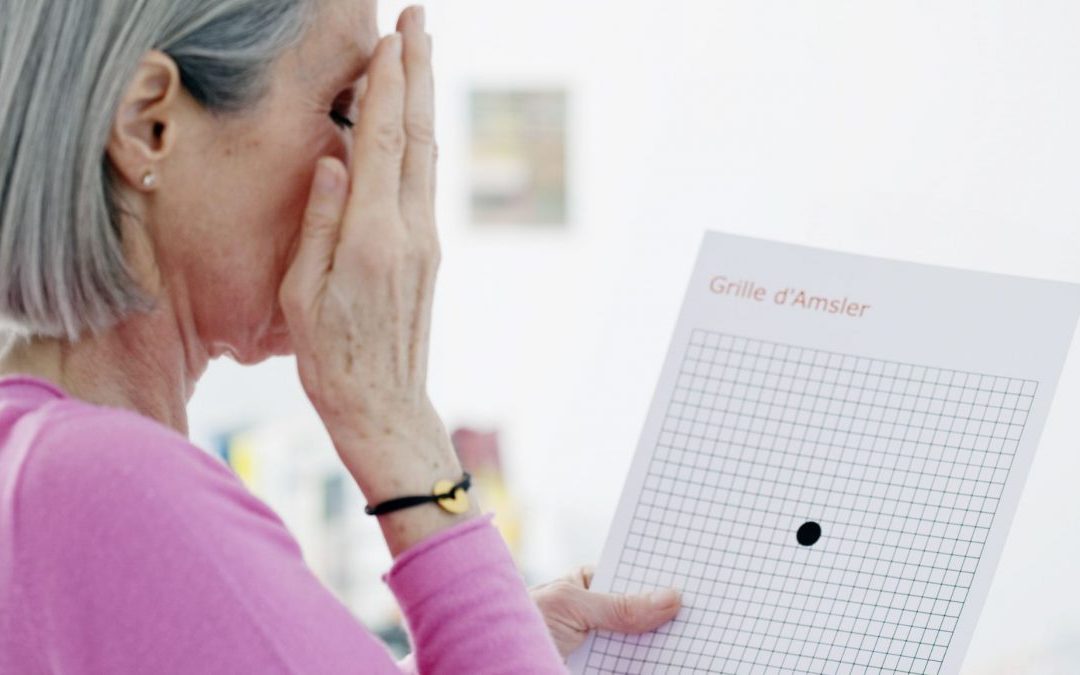RECOVERY PLAN – Macular Degeneration – Wet/Dry (ARMD)
What is the Macula?
At the back of the eye is a layer of light sensitive tissue called the retina. The macula is found at the centre of the retina where the incoming rays of light are focused. The macula is very important and responsible for:
1) What we see straight in front of us
2) The vision needed for detailed activities such as reading and writing
3) Our ability to see colour.
What is Age-Related Macular Degeneration (AMD)?
Sometimes the delicate cells of the macula become damaged and stop working. Almost certainly it is some sort of nutritional deficiency that can happen at any age, although it tends to happen, as people get older and is referred to as age-related macular degeneration.
AMD is the most common cause of poor sight among people over 60 but while it never leads to 100% complete sight loss, it may result in only 5% peripheral or side vision will remaining undamaged. There are two different types of AMD:
Rather than being technical (you can learn all the technicalities from a medical book), it is more useful to describe the symptoms you may experience. Early signs include:
|
You will need a good consultation with an eye doctor to identify precisely what is wrong. BUT, most Doctors do not believe anything can be done. You are going to need to take your own health in your own hands. Eyesight Action will help your eye health recovery.
What treatment is available for AMD?
Dry AMD
Although there is currently no medical treatment available for dry AMD, you can be helped to see well with nutritional supplements and stimulation of points around the eye with micro-current stimulation. Some doctors already will offer or refer you to this although the majority while not offering any treatment themselves do not.
Wet AMD
People with wet AMD can also be helped to see well with the same nutritional and micro-current stimulation program. There is also some laser treatment available for wet AMD, however it is not suitable for use in the majority of cases and can leave you permanently worse off. The laser should be used as a last resort.
Laser treatment
Laser, a device that gives an intense beam of light, can sometimes treat wet AMD. This is usually done as an outpatient and although it may cause some discomfort, is not painful. A special contact lens is put onto the eye to help focus the laser onto the macula and the heat from the laser beam then destroys the leaky blood vessels. The benefit of this treatment is that it can prevent further degeneration of the macula. However, the laser treatment can damage healthy macula cells meaning that you might lose a little sight to save a lot. Laser treatment is only useful in about 10 per cent of people with wet AMD and this always where people have reported their symptoms early.
Photodynamic therapy
A new treatment for wet AMD has recently been announced, however this treatment is still in the experimental stages and is not openly available to everyone. This new treatment is called photodynamic therapy (PDT).
With PDT a light-sensitive dye is injected into the bloodstream and is transported to the retina at the back of the eye. This chemical highlights the blood vessels that are growing abnormally. A low energy or ‘cold’ laser beam is then shone onto the macula. This makes the chemical react and destroy the leaking blood vessels without damaging the healthy tissue around the affected area in the back of the eye. More than one treatment is usually required.
The long-term effects of this treatment or its success have yet to be proved. It may only help those newly developed wet AMD, when it has been caught in the early stages.
PDT is unsuitable for long-established wet AMD and cannot restore sight that has already been damaged by macular degeneration. PDT cannot be used to treat dry AMD.
Other treatments
There are a number of other possible treatments currently being explored, such as radiation therapy, drug therapy and surgery. The development of new medical treatments takes a long time and must be rigorously tested before being made available to the public. The benefit of these types of treatments remains uncertain and you should consider the nutritional route first.

